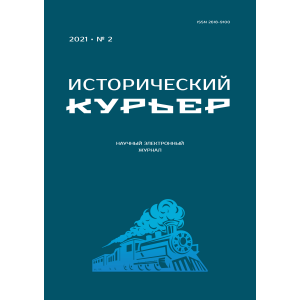This issue was prepared within the framework of the project “Man, society and power in Russia of the 20th – early 21st century: processes and results”. The museum is an important socio-cultural institution, whose activity is determined by a triad of actors: the state, society, and man. Museology as an interdisciplinary branch of knowledge creates theoretical prerequisites, generalizes and synthesizes empirical experience in the field of heritage development by museums and other cultural institutions. This creates a new space for the integration of science, education, and culture.
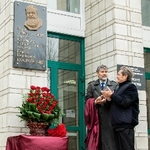 The Public Role of Scientific Heritage
The Public Role of Scientific Heritage
G.M. Zaporozhchenko
Public Memory of the Leaders of Science in Siberia (Second Half of the 20th – Beginning of the 21th Century)
The exclusivity of the personal component is a bright feature of the Siberian Branch of the Russian Academy of Sciences. Resonant events in the field of public memory in 2018–2020 were: the celebration on a citywide scale of the 120th anniversary of the birth of аcademician M. Lavrentiev; the 90th anniversary of the historian academician N. Pokrovsky; the installation of memorial plaques of N. Pokrovsky, D. Belyaev; the exhibition dedicated to the courageous sisters Karpovs – M. Cheremisina and T. Zaslavskaya; new documentaries about M. Lavrentiev and G. Boreskov. Public memory records the consensus in society about what is worth remembering and how to remember, broadcast in various forms: from a solemn meeting in the Great Hall of the Government of the Novosibirsk Region to a sign with a quote from academician T. Zaslavskaya in the “smart” bench on the street of the Novosibirsk Akademgorodok.
Publishing: 28/04/2021
How to cite: Zaporozhchenko G.M. Public Memory of the Leaders of Science in Siberia (Second Half of the 20th – Beginning of the 21th Century) // Historical Courier, 2021, No. 2 (16), pp. 9–24. [Available online:] http://istkurier.ru/data/2021/ISTKURIER-2021-2-01.pdf
 The Public Role of Scientific Heritage
The Public Role of Scientific Heritage
O.A. Savelova, I.A. Krayneva
The Karpov Sisters’ Electronic Archive: A Story of a Scientific Dynasty
The SB RAS Open Archive is the third in a series of projects aimed at providing open distributed access to archival information, which is critically important to historians of science. The content of the archive is based on documents from personal archives as well as archives of educational, social and artistic organizations of the Siberian Branch of the Russian Academy of Scientists. As a rule, materials are provided by relatives of the fonds’ creators based on free use for research purpose. In this work, we present a brief analysis of the personal collection of the Karpov sisters (née) – the academician Tatiana Ivanovna Zaslavskaya (1927–2013) and Maya Ivanovna Cheremisina, Doctor of Phylological Sciences (1924–2013).
Publishing: 28/04/2021
How to cite: Savelova O.A., Krayneva I.A. The Karpov Sisters’ Electronic Archive: A Story of a Scientific Dynasty // Historical Courier, 2021, No. 2 (16), pp. 25–35. [Available online:] http://istkurier.ru/data/2021/ISTKURIER-2021-2-02.pdf
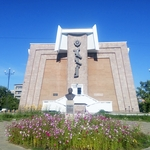 The Public Role of Scientific Heritage
The Public Role of Scientific Heritage
A.E. Murzintseva, L.L. Kushnareva, S.E. Erdineeva
Scientific Heritage in Academic Institutions of Buryatia: Forms of Preservation and Actualization
The article analyzes the main forms of work with the heritage that have developed in the Buryat Scientific Center of the Siberian Branch of the Russian Academy of Sciences (BSC SB RAS) and academic institutes of Ulan-Ude. The article considers the activities of the Center for Oriental Manuscripts and Woodcuts, the Central Scientific Library, and the Museum. The article describes commemorative practices related to archival, book and clothing collections, as well as exhibitions, research, memorial and anniversary scientific conferences, and the installation of memorial signs. Previously unpublished information about memorial libraries and memorial plaques in the BSC SB RAS is provided.
Publishing: 28/04/2021
How to cite: Murzintseva A.E., Kushnareva L.L., Erdineeva S.E. Scientific Heritage in Academic Institutions of Buryatia: Forms of Preservation and Actualization // Historical Courier, 2021, No. 2 (16), pp. 36–47 [Available online:] http://istkurier.ru/data/2021/ISTKURIER-2021-2-03.pdf
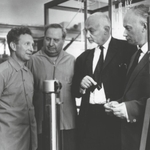 The Public Role of Scientific Heritage
The Public Role of Scientific Heritage
N.A. Kupershtokh
Scientific Heritage of the Founders of the Chemical Institutes of Novosibirsk
The history of the life of outstanding scientists-chemists G.K. Boreskov, N.N. Vorozhtsov, A.V. Nikolaev, V.V. Voevodsky. At the Novosibirsk Scientific Center, these scientists were the organizers of institutes in the field of catalysis, organic and inorganic chemistry, chemical kinetics and combustion. Nowadays the institutes of the SB RAS are named after their founders. In the modern scientific world, Boreskov Institute of Catalysis, N.N. Vorozhtsov Novosibirsk Institute of Organic Chemistry, Nikolaev Institute of Inorganic Chemistry, Voevodsky Institute of Chemical Kinetics and Combustion. The names of prominent scientists-chemists of Novosibirsk have become firmly established in the history of academic science and are an integral part of the world cultural heritage.
Publishing: 28/04/2021
How to cite: Kupershtokh N.A. Scientific Heritage of the Founders of the Chemical Institutes of Novosibirsk // Historical Courier, 2021, No. 2 (16), pp. 48–67. [Available online:] http://istkurier.ru/data/2021/ISTKURIER-2021-2-04.pdf
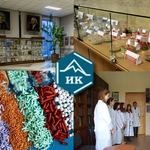 The Public Role of Scientific Heritage
The Public Role of Scientific Heritage
L.Y. Startseva, A.A. Vedyagin
Museumification of the Scientific Heritage of the Novosibirsk School of Catalysis
The article is devoted to the history of the creation of the Museum Complex of the Institute of Catalysis of the Siberian Branch of the Russian Academy of Sciences. Museum work at the Institute began with the creation of the Memorial Room of Academician G.K. Boreskov, conducted on a voluntary basis. In 1997, the museum acquired the status of a division of the Institute as part of the Scientific and Organizational Department, and in 2017 it was reorganized into the Museum Department. Currently, the Museum complex organically combines the expositions of the Memorial Room with representative collections of catalysts, materials about the scientific achievements of leading scientists.
Publishing: 28/04/2021
How to cite: Startseva L.Ya., Vedyagin A.A. Museumification of the Scientific Heritage of the Novosibirsk School of Catalysis // Historical Courier, 2021, No. 2 (16), pp. 68–77. [Available online:] http://istkurier.ru/data/2021/ISTKURIER-2021-2-05.pdf
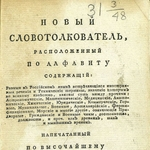 Man and Heritage: Interconnectedness
Man and Heritage: Interconnectedness
I.V. Chuvilova
Person as an Object of Verbal Mastering of the Museum Space in the 18th – Early 19th Century
The process of the formation of the Russian national language in the 18th century leads to the emergence of special terminology and concepts in the field of museum, collecting, and the protection of antiquities. In Russian dictionaries, such concepts as “museum”, “collection”, “heritage” appear, and in everyday life are gradually fixed. Not only the objects of conservation and collecting are distinguished, but also the subjects of this activity are defined: people specially trained for professional activity (and profession), specialists in certain areas of interaction with heritage. An understanding is also beginning to form: what is the museum audience and the museum visitor.
Publishing: 28/04/2021
How to cite: Chuvilova I.V. Person as an Object of Verbal Mastering of the Museum Space in the 18th – Early 19th Century // Historical Courier, 2021, No. 2 (16), pp. 78–92. [Available online:] http://istkurier.ru/data/2021/ISTKURIER-2021-2-06.pdf
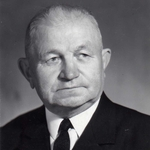 Man and Heritage: Interconnectedness
Man and Heritage: Interconnectedness
S.B. Orlov, O.N. Shelegina
Family Legacy: S.P. Gorchakov’s Diary “A Trip to Biysk” (1959)
The publication introduces for the first time the diary of the Soviet teacher S.P. Gorchakov, written during his stay in the city of Biysk, the Altai Krai in June, 1959. The diary entries contain the authors’ observations during the trip from Aramil (Sverdlovsk region) to Biysk and back, impressions from communication with fellow travelers. The life of the family of L.S. Orlova (daughter of S.P. Gorchakov) is described in sufficient detail and nature, weather in the Altai city, communication with her grandson Seryozha accompanied by pensil sketches. The published document characterizes the position of a happy Soviet person, a teacher who knows how to find interest in everyday life to convey his positive attitude towards the world around him. Diary, documents, photographs of S.P. Gorchakov is priceless family heritage carefully preserved by S.B. Orlov.
Publishing: 28/04/2021
How to cite: Orlov S.B., Shelegina O.N. Family Legacy: S.P. Gorchakov’s Diary “A Trip to Biysk” (1959) // Historical Courier, 2021, No. 2 (16), pp. 93–103. [Available online:] http://istkurier.ru/data/2021/ISTKURIER-2021-2-07.pdf
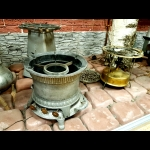 Man and Heritage: Interconnectedness
Man and Heritage: Interconnectedness
N.N. Pokrovskiy
Everyday Life of a Soviet Person as a User of Household Appliances
This article continues a series of publications that introduce museum objects stored in the collection of the Museum of Science and Technology of the Siberian Branch of the Russian Academy of Sciences. The novelty of the work is connected with the introduction into scientific circulation of previously unpublished historical sources of the Household Appliances fonds of the mentioned museum. Familiarity with the history of creation, practice of application and features of the device of household appliances can be a good help in studying the daily life of citizens of the country of the Soviets.
Publishing: 28/04/2021
How to cite: Pokrovskiy N.N. Everyday Life of a Soviet Person as a User of Household Appliances // Historical Courier, 2021, No. 2 (16), pp. 104–111. [Available online:] http://istkurier.ru/data/2021/ISTKURIER-2021-2-08.pdf
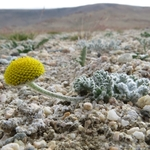 Man and Heritage: Interconnectedness
Man and Heritage: Interconnectedness
E.A. Korolyuk, V.M. Doronkin
“The Proper Names of Some Siberian Plants”: The Exhibit of the Botanical Museum of Siberia
The article is devoted to the temporary exhibit ‘Proper names of some Siberian plants’ marking the 75th anniversary of the Central Siberian Botanical Garden of the Siberian Branch of the Russian Academy of Sciences (CSBG SB RAS, Novosibirsk) (1946−2021). The authors revealed 43 taxa named after 19 botanists of the Institute. The exhibit displays photos and text material on the plants named after the researchers working at CSBG SB RAS as well as the historical facts on how these taxa were described (genera, species, and hybrid combinations).
Publishing: 28/04/2021
How to cite: Korolyuk E.A., Doronkin V.M. “The Proper Names of Some Siberian Plants”: The Exhibit of the Botanical Museum of Siberia // Historical Courier, 2021, No. 2 (16), pp. 112–117. [Available online:] http://istkurier.ru/data/2021/ISTKURIER-2021-2-09.pdf
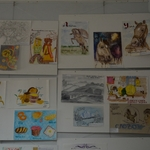 Man and Heritage: Interconnectedness
Man and Heritage: Interconnectedness
E.E. Tikhomirova
Exhibition “In the Beginning Was the Word…”: Meanings and Model of Implementation
Since 2014, every year, in May, when all Slavic countries celebrate a holiday dedicated to the creators of the Slavic alphabet, the great enlighteners Cyril and Methodius, the Department of Theory, History of Culture and Museology of the Novosibirsk State Pedagogical University has been holding an exhibition “In the Beginning was the Word...” and a number of educational projects dedicated to it. A special place in the collection is occupied by sacred books, which reflect the history of the development of Slavic writing and culture in Russia. Also at the exhibition, one can see modern alphabets and dictionaries. The main idea of the exhibition is to show the development of Slavic writing and culture from its origin to the present day through the prism of the transformation of writing as an achievement of all humanity.
Publishing: 28/04/2021
How to cite: Tikhomirova E.E. Exhibition “In the Beginning Was the Word…”: Meanings and Model of Implementation // Historical Courier, 2021, No. 2 (16), pp. 118–127. [Available online:] http://istkurier.ru/data/2021/ISTKURIER-2021-2-10.pdf
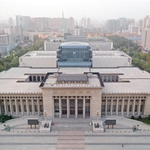 Ethno-cultural Heritage in Museums
Ethno-cultural Heritage in Museums
Dai Jianbing
“Chronicle” of the Culture of the Yanzhao Civilization in the Museum of the Hebei Province (China)
The Yanzhao culture is one of the important components of the majestic five-thousand-year history of Chinese civilization. It reflects not only the general civilizational features, but also the regional identity. The characters “Yanzhao” are an abbreviation of the modern province of Hebei. During the two-thousand-year history, the Yanzhao region achieved significant success in various fields: architecture, natural sciences and humanities, agriculture, crafts, and art, which contributed to the development of China. Currently, a significant part of the treasures from the Yanzhao cultural heritage is stored in the Museum of Hebei Province, testifying to the centuries-old history of Yanzhao culture.
Publishing: 28/04/2021
How to cite: Dai Jianbing. “Chronicle” of the Culture of the Yanzhao Civilization in the Museum of the Hebei Province (China) // Historical Courier, 2021, No. 2 (16), pp. 128–139. [Available online:] http://istkurier.ru/data/2021/ISTKURIER-2021-2-11.pdf
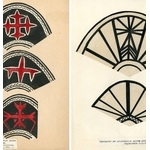 Ethno-cultural Heritage in Museums
Ethno-cultural Heritage in Museums
S.V. Buraeva, O.V. Buraeva
Cultural Heritage of the indigenous peoples of Siberia: the Evenkian Ornament
Based on the visual materials from the personal archive of the famous ethnographer P.P. Khoroshikh, the article considers the peculiarities of the Evenk ornament of Lower Tunguska as an integral part of the ethnocultural heritage. A typology of the motifs of ornament on objects made of wood and bone of a local group of Evenks was created out. For the first time, a unique source was put into scientific circulation – original handwritten collection-album of ornaments copied by P.P. Khoroshikh in 1930 in a technique close to the negative estampage method. Authentic ornaments accompany the scientist's comments, containing indications of localization (camp), material, longevity of execution, masters, in some cases – colors.
Publishing: 28/04/2021
How to cite: Buraeva S.V., Buraeva O.V. Cultural Heritage of the Indigenous Peoples of Siberia: the Evenkian Ornament // Historical Courier, 2021, No. 2 (16), pp. 140–153. [Available online:] http://istkurier.ru/data/2021/ISTKURIER-2021-2-12.pdf
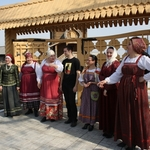 Ethno-cultural Heritage in Museums
Ethno-cultural Heritage in Museums
T.N. Zolotova
Study, Preservation and Actualization of Cultural Heritage in the Museum-Reserve “Antiquity Siberian”
The article examines the activities of the museum-reserve of the Omsk region “Antiquity Siberian” for the study, preservation and actualization of cultural heritage. The factors of successful work of the museum-reserve are the location of the complex in the place of historical buildings, the systematic activities of the museum management to recreate the historical cultural environment, painstaking research work. The scientific potential accumulated in the region, interactive forms of work with visitors and the creative enthusiasm of employees are actively used, “Antiquity Siberian” is the most popular historical and cultural complex in the Omsk region. The museum-reserve is an example of respect for the cultural heritage and fostering love for folk traditions and their homeland.
Publishing: 28/04/2021
How to cite: Zolotova T.N. Study, Preservation and Actualization of Cultural Heritage in the Museum-Reserve “Antiquity Siberian” // Historical Courier, 2021, No. 2 (16), pp. 154–165. [Available online:] http://istkurier.ru/data/2021/ISTKURIER-2021-2-13.pdf
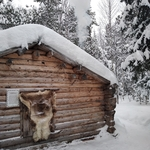 Ethno-cultural Heritage in Museums
Ethno-cultural Heritage in Museums
T.S. Kuryanova, N.V. Zolotareva, M.Yu. Charyshova
Museum Pedagogy as a Tool for Actualizing the Ethnocultural Heritage of the Northern Khanty and Altai
The article is devoted to the study of museum pedagogy as a way of actualizing the ethnocultural heritage of the northern Khanty and Altai. The paper considers and analyzes the forms of museum and educational activities - traditional and innovative, used in the Natural and Ethnographic Park-Museum “Zhivun” of the Shurykshkarsky District of the Yamalo-Nenets Autonomous Okrug and the National Museum of the Altai Republic named after A.V. Anokhin, in order to identify the common and the special. Museum documentation, archival materials and data obtained as a result of observation were used as the main sources that served to describe these forms.
Publishing: 28/04/2021
How to cite: Kuryanova T.S., Zolotareva N.V., Charyshova M.Yu. Museum Pedagogy as a Tool for Actualizing the Ethnocultural Heritage of the Northern Khanty and Altai // Historical Courier, 2021, No. 2 (16), pp. 166–177. [Available online:] http://istkurier.ru/data/2021/ISTKURIER-2021-2-14.pdf
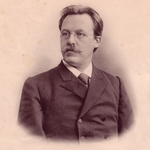 Museums – Centers for the Study of Local History
Museums – Centers for the Study of Local History
V.V. Tkachev
Siberian Periodicals n the Artistic Life in the Irkutsk Province in the Early 20th Century
The article is devoted to the history of the formation of the artistic life of the Irkutsk province at the beginning of the 20th century. Based on the sources of periodicals, the process of organizing and holding art exhibitions is revealed. Newspapers told readers about unique events, familiarized residents with the paintings of domestic and foreign artists, the artistic life of the region. The study examines the main stages of exhibitions, identifies the problems and results of events. As a result of the work, it was established that periodicals make it possible to understand how the idea of urban residents about museum exhibitions in the Irkutsk province was formed.
Publishing: 28/04/2021
How to cite: Tkachev V.V. Siberian Periodicals n the Artistic Life in the Irkutsk Province in the Early 20th Century // Historical Courier, 2021, No. 2 (16), pp. 178–183. [Available online:] http://istkurier.ru/data/2021/ISTKURIER-2021-2-15.pdf
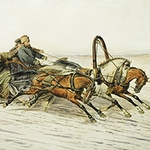 Museums – Centers for the Study of Local History
Museums – Centers for the Study of Local History
T.E. Savitskaya
Merchants Kukuev’s Collection in the Saratov Art Museum Named after A.N. Radishchev. In Regards to Reconstruction
An important period in the formation of the Radishchev Art Museum collection falls in the early post-revolutionary years. The artworks were flowing, requisitioned mainly from the residents of Saratov and the Saratov province. One of the most significant additions of this time was the collection of merchants Kokuevs’. This article is the first attempt to study it.
Publishing: 28/04/2021
How to cite: Savitskaya T.E. Merchants Kukuev’s Collection in the Saratov Art Museum Named after A.N. Radishchev. In Regards to Reconstruction // Historical Courier, 2021, No. 2 (16), pp. 184–206. [Available online:] http://istkurier.ru/data/2021/ISTKURIER-2021-2-16.pdf
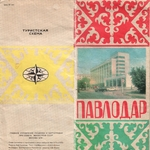 Museums – Centers for the Study of Local History
Museums – Centers for the Study of Local History
O.N. Truevtseva, V.A. Kozhokar
Museum Councils in Local History Museums in the North-East of Kazakhstan in the 1960–1970s
Museum Councils of the museums of Republic of Kazakhstan in the 1960s–1970s, perform the function of ideological mentors, which was due to a number of objective and subjective factors: the improvement of the financial situation of the population, the democratization of public life, the search for effective means of implementing the ideological attitudes of the Communist party. Corresponding to the ideological attitudes of the XXII Congress of the Communist party of the Soviet Union, members of the Museum of the Soviets became influential mentors of museum employees, implementing the most important works related to the defining themes of the exhibitions, performances on radio and TV, writing lectures, and excursions.
Publishing: 28/04/2021
How to cite: Truevtseva O.N., Kozhokar V.A. Museum Councils in Local History Museums in the North-East of Kazakhstan in the 1960–1970s // Historical Courier, 2021, No. 2 (16), pp. 207–213. [Available online:] http://istkurier.ru/data/2021/ISTKURIER-2021-2-17.pdf
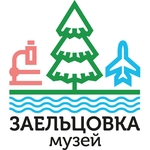 Museums – Centers for the Study of Local History
Museums – Centers for the Study of Local History
E.V. Makarova
The Formation of the Zayeltsovka Museum as a Museum of Local History of a New Type
The article reflects and analyzes the process of formation of the “Zaeltsovka” museum of the Zaeltsovsky district of Novosibirsk in the trend of a new type of local history museum. In the period from 2013 to 2020 a scientifically-grounded thematic-chronological exposition was created reflecting the history and modern development of the Zaeltsovsky district the communication model “Museum Zaeltsovka – the socio-cultural center of the metropolis district” was successfully introduced. Implementation of the interdepartmental project “We are fellow countrymen” broadcasting the regional and local identity of the Novosibirsk region exhibition and museum-pedagogical activities is of current and promising importance.
Publishing: 28/04/2021
How to cite: Makarova E.V. The Formation of the Zayeltsovka Museum as a Museum of Local History of a New Type // Historical Courier, 2021, No. 2 (16), pp. 214–222. [Available online:] http://istkurier.ru/data/2021/ISTKURIER-2021-2-18.pdf
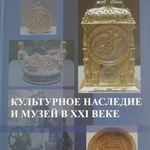 World of Books
World of Books
E.N. Mastenitsa
Relevant Problems of the Cultural Heritage Development, Museology, Museum and Exhibition Design in the Pages of Textbooks by Saint Petersburg Museologist
The article is devoted to the consideration of theoretical and methodological approaches, key problems, structure and contents of two textbooks created by the authors’ teams of teachers of the Department of Museology and Cultural Heritage of the St. Petersburg State Institute of Culture: “Cultural heritage and the museum in the 21th century” (2018) and “Designing Museum Expositions and Exhibitions: History-Theory-Practice” (2020). Summarizing the material necessary for training, the manuals reflect the modern view of St. Petersburg museologists on topical issues of studying and protecting heritage, museology as an interdisciplinary field of social and humanitarian knowledge, as well as on the historical, theoretical and applied aspects of museum exposition and exhibition design.
Publishing: 28/04/2021
How to cite: Mastenitsa E.N. Relevant Problems of the Cultural Heritage Development, Museology, Museum and Exhibition Design in the Pages of Textbooks by Saint Petersburg Museologists // Historical Courier, 2021, No. 2 (16), pp. 223–232. [Available online:] http://istkurier.ru/data/2021/ISTKURIER-2021-2-19.pdf



